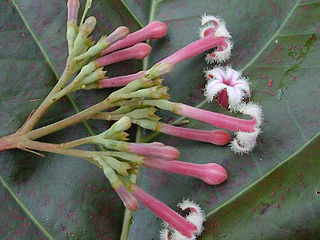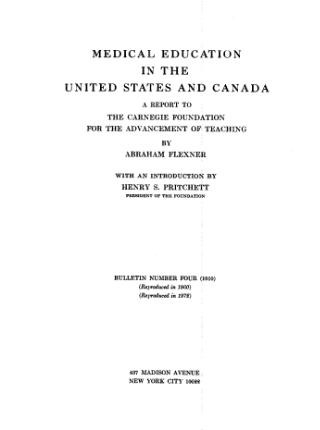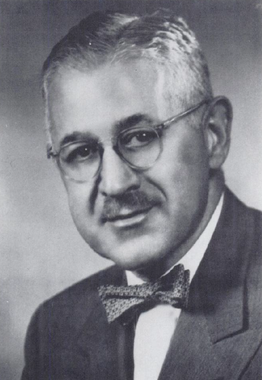Related Research Articles

Carl Linnaeus, also known after his ennoblement in 1761 as Carl von Linné, was a Swedish botanist, zoologist, taxonomist, and physician who formalised binomial nomenclature, the modern system of naming organisms. He is known as the "father of modern taxonomy". Many of his writings were in Latin; his name is rendered in Latin as Carolus Linnæus and, after his 1761 ennoblement, as Carolus a Linné.

Histology, also known as microscopic anatomy or microanatomy, is the branch of biology that studies the microscopic anatomy of biological tissues. Histology is the microscopic counterpart to gross anatomy, which looks at larger structures visible without a microscope. Although one may divide microscopic anatomy into organology, the study of organs, histology, the study of tissues, and cytology, the study of cells, modern usage places all of these topics under the field of histology. In medicine, histopathology is the branch of histology that includes the microscopic identification and study of diseased tissue. In the field of paleontology, the term paleohistology refers to the histology of fossil organisms.

Heinrich Hermann Robert Koch was a German physician and microbiologist. As the discoverer of the specific causative agents of deadly infectious diseases including tuberculosis, cholera, and anthrax, he is regarded as one of the main founders of modern bacteriology. As such he is popularly nicknamed the father of microbiology, and as the father of medical bacteriology. His discovery of the anthrax bacterium in 1876 is considered as the birth of modern bacteriology. His discoveries directly provided proofs for the germ theory of diseases, and the scientific basis of public health.

Vitamins are organic molecules that are essential to an organism in small quantities for proper metabolic function. Essential nutrients cannot be synthesized in the organism in sufficient quantities for survival, and therefore must be obtained through the diet. For example, Vitamin C can be synthesized by some species but not by others; it is not considered a vitamin in the first instance but is in the second. Most vitamins are not single molecules, but groups of related molecules called vitamers. For example, there are eight vitamers of vitamin E: four tocopherols and four tocotrienols.

Cinchona is a genus of flowering plants in the family Rubiaceae containing at least 23 species of trees and shrubs. All are native to the tropical Andean forests of western South America. A few species are reportedly naturalized in Central America, Jamaica, French Polynesia, Sulawesi, Saint Helena in the South Atlantic, and São Tomé and Príncipe off the coast of tropical Africa, and others have been cultivated in India and Java, where they have formed hybrids.

Christian Gottfried Ehrenberg was a German naturalist, zoologist, comparative anatomist, geologist, and microscopist. Ehrenberg was an evangelist and was considered to be one of the most famous and productive scientists of his time.

Sir William Brooke O'Shaughnessy MD FRS was an Irish physician famous for his wide-ranging scientific work in pharmacology, chemistry, and inventions related to telegraphy and its use in India. His medical research led to the development of intravenous therapy and introduced the therapeutic use of Cannabis sativa to Western medicine.

The Flexner Report is a book-length landmark report of medical education in the United States and Canada, written by Abraham Flexner and published in 1910 under the aegis of the Carnegie Foundation. Many aspects of the present-day American medical profession stem from the Flexner Report and its aftermath. The Flexner report has been criticized for introducing policies that encouraged systemic racism.

Sebastian Kneipp was a German Catholic priest and one of the forefathers of the naturopathic medicine movement. He is most commonly associated with the "Kneipp Cure" form of hydrotherapy, the application of water through various methods, temperatures and pressures, which he claimed to have therapeutic or healing effects, thus building several hospitals in Bad Wörishofen.

Curare is a common name for various alkaloid arrow poisons originating from plant extracts. Used as a paralyzing agent by indigenous peoples in Central and South America for hunting and for therapeutic purposes, curare only becomes active when it contaminates a wound. These poisons cause weakness of the skeletal muscles and, when administered in a sufficient dose, eventual death by asphyxiation due to paralysis of the diaphragm. Curare is prepared by boiling the bark of one of the dozens of plant sources, leaving a dark, heavy paste that can be applied to arrow or dart heads. In medicine, curare has been used as a treatment for tetanus and strychnine poisoning and as a paralyzing agent for surgical procedures.

Stanley "Stan" Falkow was an American microbiologist and a professor of microbiology at Georgetown University, University of Washington, and Stanford University School of Medicine. Falkow is known as the father of the field of molecular microbial pathogenesis. He formulated molecular Koch's postulates, which have guided the study of the microbial determinants of infectious diseases since the late 1980s. Falkow spent over 50 years uncovering molecular mechanisms of how bacteria cause disease and how to disarm them. Falkow also was one of the first scientists to investigate antimicrobial resistance, and presented his research extensively to scientific, government, and lay audiences explaining the spread of resistance from one organism to another, now known as horizontal gene transfer, and the implications of this phenomenon on our ability to combat infections in the future.

Agaricus subrufescens is a species of mushroom, commonly known as almond mushroom, almond agaricus, mushroom of the sun, God's mushroom, mushroom of life, royal sun agaricus, jisongrong, or himematsutake and by a number of other names. Agaricus subrufescens is edible, with a somewhat sweet taste and a fragrance of almonds.

Tubocurarine is a toxic alkaloid historically known for its use as an arrow poison. In the mid-1900s, it was used in conjunction with an anesthetic to provide skeletal muscle relaxation during surgery or mechanical ventilation. Safer alternatives, such as cisatracurium and rocuronium, have largely replaced it as an adjunct for clinical anesthesia and it is now rarely used.

Francis Peyton Rous was an American pathologist at the Rockefeller University known for his works in oncoviruses, blood transfusion and physiology of digestion. A medical graduate from the Johns Hopkins University, he was discouraged to become a practicing physician due to severe tuberculosis. After three years of working as an instructor of pathology at the University of Michigan, he became dedicated researcher at the Rockefeller Institute for Medical Research for the rest of his career.

Abbé Gasparo Ferdinando Felice Fontana was an Italian polymath who contributed to experimental studies in physiology, toxicology, and physics. As a physicist he discovered the water gas shift reaction in 1780. He investigated the human eye and has also been credited with discovering the nucleolus of a cell. His work on the venom of vipers was among the earliest experimental toxicological studies. He served as a court physicist for Peter Leopold, Duke of Tuscany and taught at the University of Pisa. He was involved in the establishment of the La Specola museum in Florence.
Harold Randall Griffith was a Canadian anesthesiologist and a leader in the fields of anesthesiology.

David Douglas Cunningham was a Scottish doctor and researcher who worked extensively in India on various aspects of public health and medicine. He studied the spread of bacteria and the spores of fungi through the air and conducted research on cholera. In his spare time he also studied the local plants and animals.

Paul György (April 7, 1893 – March 1, 1976) was a Hungarian-born American biochemist, nutritionist, and pediatrician best known for his discovery of three B vitamins: riboflavin, B6, and biotin. Gyorgy was also well known for his research into the protective factors of human breast milk, particularly for his discoveries of Lactobacillus bifidus growth factor activity in human milk and its anti-staphylococcal properties. He was a recipient of the National Medal of Science in 1975 from President Gerald Ford.
John Milton Bigelow was an American physician and botanist. He had a successful medical practice, and also, a keen interest in botany - especially native plants with medical applications. He participated as a botanist and surgeon on two important expeditions through the American Southwest—the Mexican Boundary Survey and the 35th Parallel Expedition for the Pacific Railroad Surveys. He also amassed a significant collection of California plants that yielded many new species. He communicated his botanical results with the three top American botanists of the day, John Torrey, Asa Gray, and George Engelmann. Many of his botanical discoveries were named after or by him. He contributed to the botanical and medical literature of his day.

Griffith Evans was a Welsh physician and veterinary pathologist who was the first to determine that a trypanosome parasite was responsible for surra disease in horses while serving in British India. Described as "the man who first saw a pathogenic trypanosome", he identified the causal organism as a haematozoon in 1880 which was given the species name Trypanosoma evansi after him.
References
- 1 2 3 Kemp, Christopher (17 January 2018). "The Amazonian arrow poison that made modern anaesthesia". New Scientist (3161).
- ↑ Gill, Richard C. (1940). White Water and Black Magic. Henry Holt and Company.
- ↑ Humble, RM (December 1982). "The Gill-Merrill expedition: penultimate chapter in the curare story". Anesthesiology. 57 (6): 519–26. doi: 10.1097/00000542-198212000-00014 . PMID 6756214. S2CID 45182321.
- ↑ Raghavendra, T (July 2002). "Neuromuscular blocking drugs: discovery and development". Journal of the Royal Society of Medicine. 95 (7): 363–7. doi:10.1177/014107680209500713. PMC 1279945 . PMID 12091515.